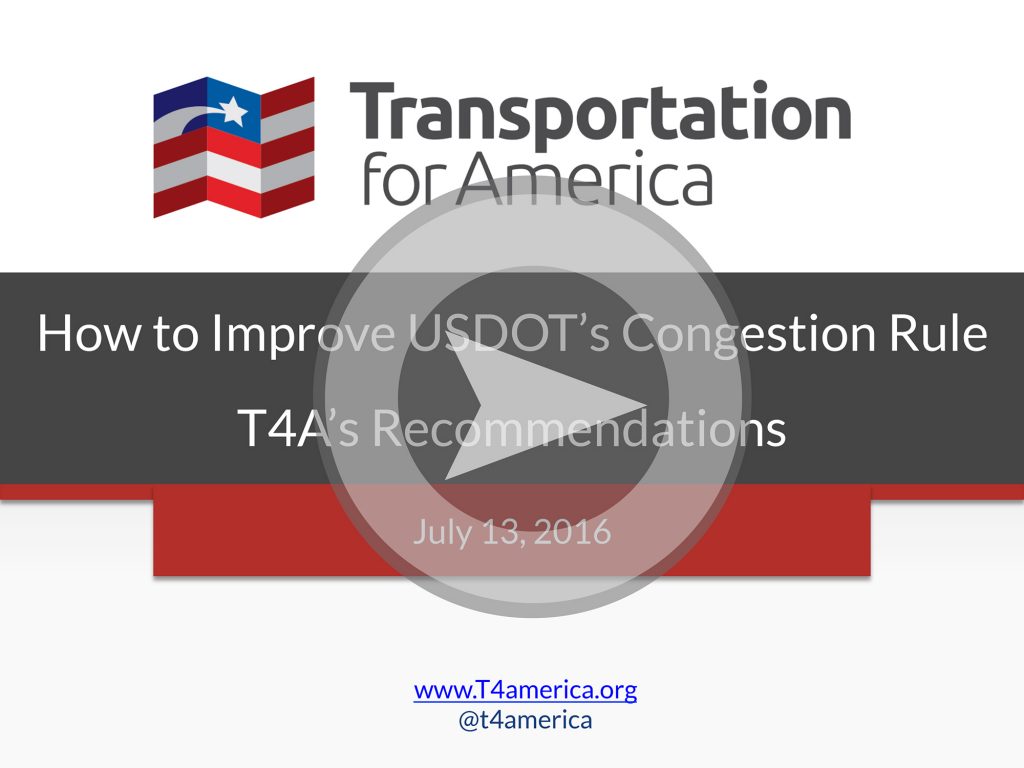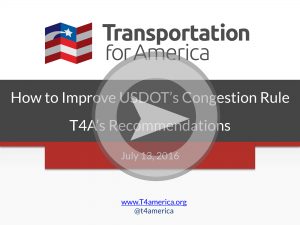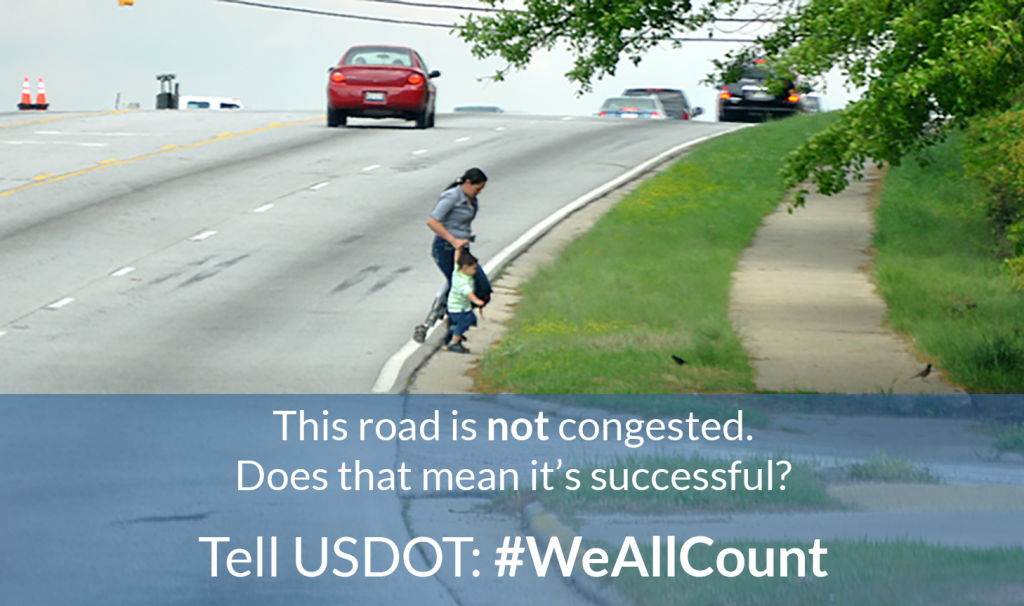
What would a better measure of congestion look like? Unpacking an alternative

USDOT’s draft rule that will govern how states and metro areas will have to measure and address congestion would define “success” in incredibly outdated ways. In a webinar earlier this week, we discussed better ways to measure congestion and a proposal we’re sending to USDOT.
Nearly 3,000 of you have already sent letters to USDOT telling them that their draft rule takes the wrong approach. But is there an alternate proposal that could get traction with USDOT as they modify the proposal based on the feedback they receive?
 In a webinar on Wednesday, July, 13th, our policy team discussed alternative measures for congestion and unpacked the proposal that we’re submitting to USDOT for their consideration, which was developed in collaboration with a handful of MPOs, transit agencies, state DOTs, and advocates throughout the country.
In a webinar on Wednesday, July, 13th, our policy team discussed alternative measures for congestion and unpacked the proposal that we’re submitting to USDOT for their consideration, which was developed in collaboration with a handful of MPOs, transit agencies, state DOTs, and advocates throughout the country.
Click the image at right (or here) to view the presentation from the webinar and hear more about the proposal we are submitting to USDOT this week. Update: For those of you who are more technically inclined, you may download our full 12-page proposal (pdf) that we submitted to USDOT on July 14th.
Deciding how to evaluate which projects are “successful” will influence which transportation projects are selected and built for years to come. And the problem with using old measures for assessing traffic congestion is that it leads directly to old “solutions,” like prioritizing fast driving speeds above all other modes of transportation and their associated benefits. We’ve been illustrating this with some simple graphics that show what results when “moving cars fast” becomes the prime or only consideration:

Have you sent your letter yet? There’s still time.
Success is about a lot more than moving cars fast. Tell USDOT to improve their proposed rule. Sign an individual letter that we will deliver on your behalf to USDOT.



